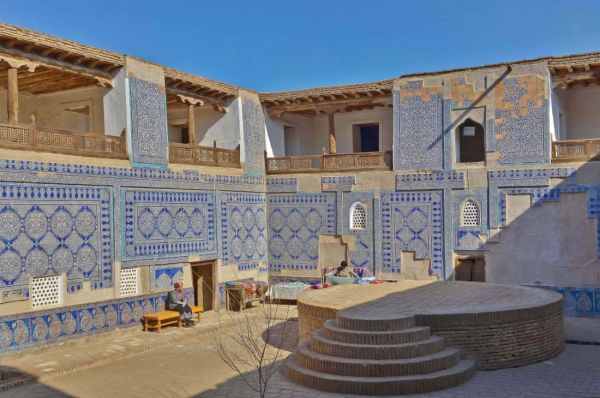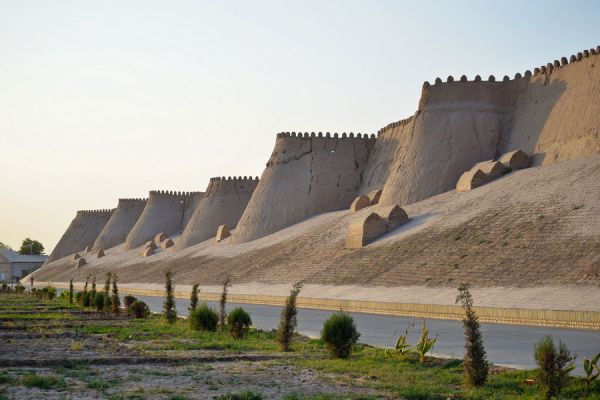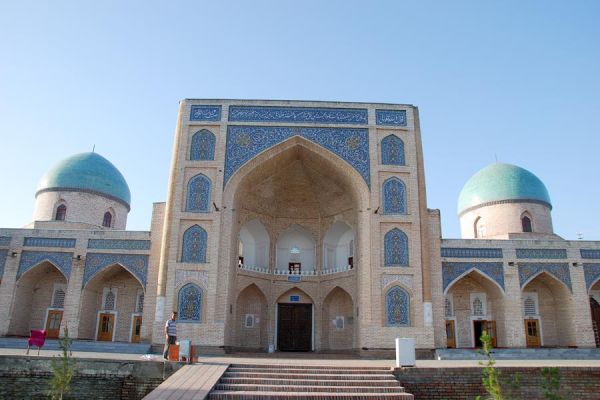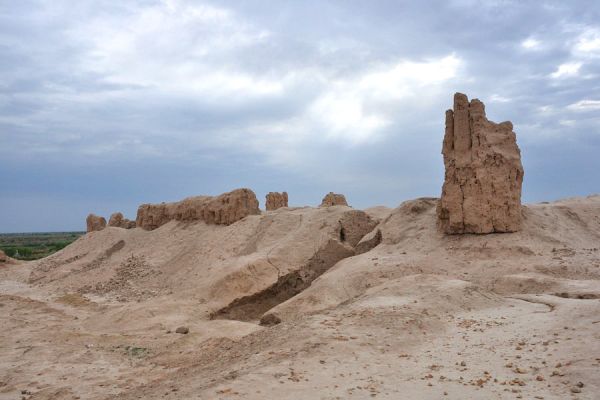Tash-Khauli Palace Complex
Built in the fourth decade of the 19th century, the Tash-Khauli Palace asserts with its scale the power and grandeur characteristic of the Khorezm palace architecture of that era. The building was built by order of Allakuli Khan. Thanks to the prosperity of Khorezm and friendly mutually beneficial economic ties with neighboring countries, no expense was spared in decorating the palace. Khan expected that all the work would take no more than two years, and was very angry at the "prolonged" construction. During the eight years during which the palace was built, many builders fell out of favor. Initially, the harem and the governor's chambers were completed, later the mehmonkhona, a kind of reception room for guests and ambassadors, joined them from the east, and the arzhona (court) from the opposite, western side.
A maze of gloomy corridors, devoid of sufficient natural and artificial lighting, connects the separate parts of the palace. The chambers of the ruler and the dwelling of his wives are separated from the official part by a continuous corridor. The Khan's chambers are the most spacious, exquisitely decorated room. Separate rooms were set up for each of the Khan's wives, whose number, according to the Koran, should not exceed four. Further, the courtyard was surrounded by two floors with secluded rooms for the ruler's relatives and his numerous concubines. The walls are decorated everywhere with majolica in traditional white and blue tones. The ceiling is painted in red and brown colors, in harmony with the finely wrought copper window grilles. All the ornaments are unique, they do not repeat each other even once.
The side of the palace intended for embassies and guests of the ruler is a square courtyard with a raised platform for installing a guest yurt, equipped with numerous ivan ceilings, surrounded by rooms also decorated with blue and white majolica.
On the western side, which was specially equipped for court sessions, often held with the participation of the ruler, the total area of the premises is twice as large as the eastern mekhmonkhona (reception area). The walls of arzonkhona are decorated by the same artist who decorated the rest of the palace, master Abdullah, who received the name "Genius" from his contemporaries.





















